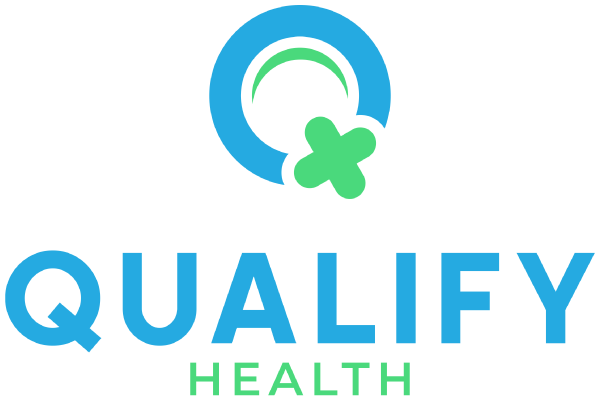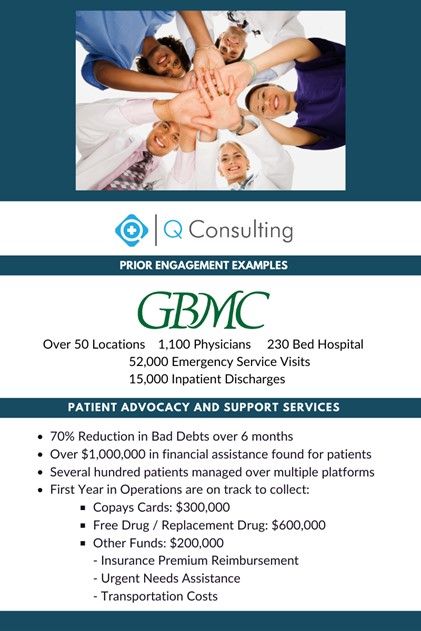How hospitals and oncology centers can reduce bad debt through Patient Assistance Programs, Copay Cards and Foundations
The ultimate goal of a hospital or healthcare organization is to provide exceptional patient care; however, making a profit is necessary to achieve that goal.
According to a survey from Sage Growth Partners, a healthcare research firm, more than a third of hospitals rack up at least $10 million in bad debt each year, and half do not expect to recover more than 10% of it from payors or patient out-of-pocket expenses.
Understanding Out-of-Pocket Expenses can be Complicated
Healthcare providers are more challenged than ever when providing quality care to an increasing number of patients facing unaffordable out-of-pocket costs due to high deductibles, being under-insured, or uninsured. With each of these financial hurdles, hospitals and medical practices face a tough decision:
1. Send the patient a constant stream of letters and notices informing them of their outstanding balance due
2. Write-off the payment as bad debt and carry it on their balance sheet with the expectation that payment is unlikely
Most patients’ bad debt accumulates because a patient cannot afford the balance after their insurance has covered its portion of the expense. Most medical insurance plans only cover part of the fee due to the provider, leaving the patient with out-of-pocket costs. These out-of-pocket costs include deductibles, coinsurance, and copayments.
Patients are often unaware of their out-of-pocket expense before their treatment, and in many cases, even if they are aware, they are unable to afford them. While it is ideal for a provider to collect all out-of-pocket expenses upfront, this is not always possible, especially for costly services like chemotherapy, GI infusions, and other expensive in-office injectables. The insurance carrier processes the medical claim first to calculate the patient’s responsibility and then reports it back to the provider on the explanation of benefits (EOB). It is then up to the provider to collect these payments by billing the patient.
Most organizations offer various options to make the payment process easier via patient portals and electronic payment options. However, these options are beneficial only if your patient can afford to pay. If the patient cannot afford their bill, they may qualify for a payment plan or financial assistance. Unfortunately, this extra step is not always enough, and the debt starts to mount.
Improving Cash Flow Management
Cash flow management is essential to all healthcare organizations’ viability, and their accounts receivable days are under constant measurement. Nearly all healthcare organizations bill insurance regularly to ensure ample cash flow and proactively send out a series of notices to patients to settle outstanding accounts. In these notices, the patient is instructed to submit payment within a given time frame. If payment is not received, the provider will send the patient to collections (likely lowering patient satisfaction scores). However, sending a patient to collections does not guarantee payment and usually just reduces the provider’s reimbursement because the collection agency imposes a fee for their services.
Using a billing and collection process as the only means to collect monies owed is inefficient and usually unsuccessful, particularly when patients cannot afford their bills. While it is essential to maximize collections, organizations must be careful not to take collection practices to an extreme. They risk alienating patients, receiving more patient complaints, and ultimately reducing collections.
There is a Better Way
There are many ways to avoid the ‘bad debt’ cycle that your practice might find itself in, particularly when helping patients cover their infusion and in-office drug costs. By taking advantage of many of the manufacturers, foundation, and non-profit support programs, it is likely that your patients will be able to find the help they need to cover their out-of-pocket costs.
Q Consulting Support Services – Patient Financial Advocacy
Q Consulting Support Services (QCSS) offers financial advocacy to patients through many financial assistance programs. We work closely with your clinical team to identify patients who are uninsured, underinsured, have high-out-of-pockets expenses, or high balances that qualify for assistance for their prescription drugs or infusion drugs. Below is a list of the most frequently used financial assistance routes; however, we are not limited to these options. QCSS has a comprehensive database of financial assistance programs we use to ensure we exhaust all avenues for our patients and clients.
Financial Advocacy Options:
Manufacturer Copay Card Assistance:
Drug Manufactures offer Copay Card assistance programs. The program’s purpose is to help people with commercial or private insurance cover their deductibles, copays, and coinsurance directly related to their prescription drugs’ cost.
Patient Assistance Programs:
These programs, frequently called PAPs, are designed to help those in need obtain their medications at no cost or very low cost. Many, but not all, pharmaceutical companies have PAPs.
Foundation Assistance – Copay and Premium:
Foundations offer financial assistance to those suffering from Chronic or Life-Altering Diseases when insurance is not enough to cover the treatment. Foundations help fill the gaps by assisting patients with their out-of-pocket expenses or covering costly insurance premiums.
Q Consulting offers a team of professionals that will find, source, and manage the much-needed financial assistance available to many of your patients. QCSS has a tremendous track record in reducing bad debt for providers through our financial advocacy program. One of our current clients reduced their bad debt by 70 percent within six months. Through this period, QCSS collected over $300 thousand in copay card assistance, $600 thousand in PAP (Free Drug/Replacement) assistance, and $200 thousand through other funding sources – adding up to over $1 million in financial advocacy found for this client.
If given the opportunity, QCSS will successfully help your organization recover patient balances through our financial advocacy program, ultimately reducing bad debt, increasing profits, and boosting available cash flow. We take the burden off your team so they can focus on what they do best-providing exceptional care to your patients.

